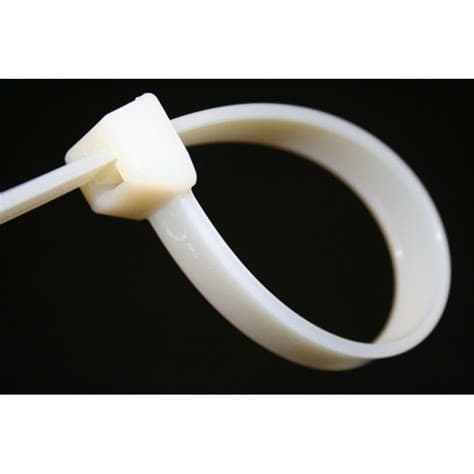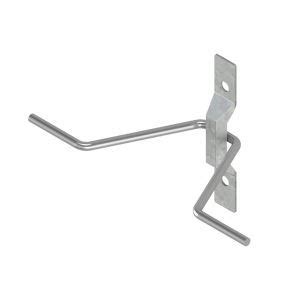Introduction to Thermal Ties
Thermal ties, also known as thermal relief connections or thermal spokes, are an essential aspect of Pad stack design in printed circuit board (PCB) fabrication. These specialized design features play a crucial role in managing heat dissipation and ensuring the overall reliability of the PCB. In this comprehensive article, we will delve into the intricacies of thermal ties, exploring their purpose, design considerations, and best practices for implementation.
What are Thermal Ties?
Thermal ties are copper connections that link the copper pad of a component to the surrounding copper pour or plane on a PCB. These connections are strategically designed to provide a controlled thermal path between the component and the copper pour, allowing for efficient heat dissipation. By managing the heat generated by components, thermal ties help prevent overheating and ensure the long-term reliability of the PCB.
The Importance of Thermal Ties in PCB Design
In modern electronics, the increasing density of components and the demand for high-performance devices have made thermal management a critical aspect of PCB design. As components generate heat during operation, it is essential to provide adequate means for heat dissipation to prevent thermal stress, component failure, and reduced overall reliability.
Thermal ties serve as a vital link between the component pads and the copper pour, enabling efficient heat transfer away from the components. Without proper thermal ties, the heat generated by components can become trapped, leading to localized hot spots and potentially causing damage to the components or the PCB itself.
Designing Thermal Ties
Thermal Tie Geometry
The geometry of thermal ties plays a significant role in their effectiveness. There are several common geometric patterns used for thermal ties, each with its own advantages and considerations.
- Spoke Pattern:
- The spoke pattern consists of multiple thin copper traces radiating outward from the component pad to the copper pour.
- This pattern provides multiple paths for heat dissipation and allows for flexibility in routing.
-
The number and width of the spokes can be adjusted based on the thermal requirements of the component.
-
Solid Connection:
- A solid connection involves a continuous copper connection between the component pad and the copper pour.
- This pattern offers the highest thermal conductivity but may pose challenges for solder wicking during the assembly process.
-
Solid connections are often used for components with high thermal dissipation requirements.
-
Broken Spoke Pattern:
- The broken spoke pattern is similar to the spoke pattern but with breaks or gaps in the copper traces.
- This pattern helps control solder wicking while still providing thermal relief.
- The breaks in the spokes can be adjusted to fine-tune the thermal characteristics and solder wicking behavior.
| Pattern | Advantages | Considerations |
|---|---|---|
| Spoke Pattern | – Multiple heat dissipation paths – Routing flexibility |
– Number and width of spokes affect thermal performance |
| Solid Connection | – Highest thermal conductivity | – Challenges with solder wicking |
| Broken Spoke Pattern | – Control over solder wicking – Thermal relief |
– Fine-tuning of spoke breaks required |
Thermal Tie Width and Spacing
The width and spacing of thermal ties are critical parameters that influence their thermal performance. Wider thermal ties provide better heat conductivity, allowing for more efficient heat dissipation. However, the width should be balanced with other design considerations, such as component spacing and routing constraints.
The spacing between thermal ties also affects their effectiveness. Adequate spacing ensures that the thermal ties can efficiently transfer heat to the copper pour without causing excessive thermal stress on the PCB. The optimal spacing depends on factors such as the component’s thermal requirements, the PCB material, and the overall layout.
| Parameter | Impact on Thermal Performance |
|---|---|
| Thermal Tie Width | – Wider ties provide better heat conductivity |
| Thermal Tie Spacing | – Adequate spacing ensures efficient heat transfer |
Thermal Tie Placement
The placement of thermal ties is another important consideration in pad stack design. Thermal ties should be strategically located to maximize their effectiveness in dissipating heat from the component. The following guidelines can help in determining the optimal placement of thermal ties:
- Proximity to Heat-Generating Components:
- Place thermal ties close to components that generate significant heat, such as power devices or high-speed processors.
-
This proximity allows for efficient heat transfer from the component to the copper pour.
-
Symmetry and Balance:
- Arrange thermal ties symmetrically around the component pad to ensure even heat distribution.
-
Balanced placement helps prevent localized hot spots and thermal stress on the PCB.
-
Consideration of Component Orientation:
- Take into account the orientation of the component when placing thermal ties.
- Align thermal ties with the direction of heat flow to facilitate efficient heat dissipation.
Thermal Tie Design Tools and Simulation
To aid in the design and optimization of thermal ties, various design tools and simulation software are available. These tools allow engineers to analyze the thermal performance of their pad stack designs and make informed decisions based on the results.
- Thermal Simulation Software:
- Thermal simulation software, such as ANSYS or Mentor Graphics FloTHERM, enables the modeling and analysis of heat transfer in PCBs.
- These tools provide insights into temperature distribution, hot spots, and the effectiveness of thermal ties.
-
Engineers can iteratively refine their designs based on the simulation results to achieve optimal thermal performance.
-
PCB Design Software:
- Modern PCB design software, such as Altium Designer or Cadence OrCAD, often includes features for thermal tie design.
- These software packages offer libraries of thermal tie patterns and allow for customization based on specific requirements.
- They also provide design rule checks (DRC) to ensure compliance with thermal tie guidelines and manufacturing constraints.

Fabrication Considerations for Thermal Ties
Solder Wicking and Assembly
One of the challenges associated with thermal ties is the potential for solder wicking during the assembly process. Solder wicking occurs when molten solder flows along the thermal ties, potentially causing shorts or affecting the solder joint quality.
To mitigate solder wicking, consider the following techniques:
- Solder Mask Dams:
- Apply solder mask dams around thermal ties to restrict the flow of molten solder.
-
These dams act as barriers, preventing solder from traveling along the thermal ties.
-
Thermal Tie Breakouts:
- Incorporate breakouts or gaps in the thermal ties near the component pad.
-
These breakouts disrupt the continuous path for solder wicking while still providing thermal relief.
-
Solder Mask Defined Pads:
- Use solder mask defined (SMD) pads instead of copper defined pads.
- SMD pads have a layer of solder mask over the copper, exposing only the desired area for soldering.
- This approach helps control solder wicking and ensures precise solder joint formation.
Manufacturing Tolerances
Manufacturing tolerances play a crucial role in the successful fabrication of thermal ties. It is important to consider the capabilities and limitations of the PCB manufacturing process when designing thermal ties.
- Minimum Width and Spacing:
- Consult with the PCB manufacturer to understand their minimum width and spacing requirements for thermal ties.
-
Adhering to these guidelines ensures that the thermal ties can be reliably manufactured and function as intended.
-
Copper Thickness:
- Consider the copper thickness of the PCB when designing thermal ties.
- Thicker copper provides better thermal conductivity but may impact the manufacturing process and cost.
- Work with the manufacturer to determine the optimal copper thickness for your specific application.
Testing and Validation
To ensure the effectiveness of thermal ties, it is essential to perform thorough testing and validation of the PCB design. This process involves both thermal analysis and physical testing to verify the thermal performance and reliability of the PCB.
- Thermal Imaging:
- Use thermal imaging cameras or thermography techniques to visualize the temperature distribution on the PCB during operation.
-
This approach helps identify hot spots, thermal gradients, and the effectiveness of thermal ties in dissipating heat.
-
Thermal Stress Testing:
- Subject the PCB to thermal stress testing, such as temperature cycling or power cycling, to assess its durability and reliability under various operating conditions.
-
These tests help identify potential weaknesses or failures related to thermal management.
-
Functional Testing:
- Perform functional testing of the PCB to ensure that all components operate within their specified temperature ranges.
- Monitor key parameters, such as voltage, current, and signal integrity, to validate the overall performance of the PCB.

Best Practices for Implementing Thermal Ties
To optimize the effectiveness of thermal ties in your PCB design, consider the following best practices:
- Collaborate with PCB Manufacturers:
- Engage in early collaboration with PCB manufacturers to discuss your thermal management requirements and design intentions.
-
Seek their expertise and guidance on thermal tie design, manufacturing capabilities, and recommended practices.
-
Use Thermal Simulation Tools:
- Leverage thermal simulation tools to analyze and optimize your thermal tie design before fabrication.
-
These tools provide valuable insights into heat distribution, allowing you to make informed design decisions.
-
Follow Industry Standards and Guidelines:
- Adhere to industry standards and guidelines related to thermal management and PCB design, such as IPC or JEDEC standards.
-
These standards provide recommendations and best practices for thermal tie design, manufacturing, and testing.
-
Document and Communicate Design Intent:
- Clearly document your thermal tie design intent, including the purpose, placement, and specifications of each thermal tie.
-
Communicate this information to the PCB manufacturer and assembly team to ensure accurate implementation and assembly.
-
Perform Thorough Testing and Validation:
- Conduct comprehensive testing and validation of your PCB design, including thermal analysis and physical testing.
- Verify the effectiveness of thermal ties in managing heat dissipation and ensure the overall reliability of the PCB.

Frequently Asked Questions (FAQ)
- What are the benefits of using thermal ties in PCB design?
-
Thermal ties provide efficient heat dissipation from components to the copper pour, preventing overheating and improving the overall reliability of the PCB.
-
How do I determine the appropriate width and spacing for thermal ties?
-
The width and spacing of thermal ties depend on factors such as the component’s thermal requirements, PCB material, and layout constraints. Consult with the PCB manufacturer and use thermal simulation tools to determine the optimal values.
-
Can thermal ties be used for all types of components?
-
Thermal ties are particularly beneficial for components that generate significant heat, such as power devices, high-speed processors, and BGAs. However, they can be used for various components to enhance thermal management.
-
What are the potential challenges associated with thermal ties during PCB assembly?
-
Solder wicking is a common challenge during assembly, where molten solder flows along the thermal ties, potentially causing shorts or affecting solder joint quality. Techniques such as solder mask dams, thermal tie breakouts, and solder mask defined pads can help mitigate this issue.
-
How can I ensure the manufacturability of my thermal tie design?
- Collaborate with the PCB manufacturer to understand their capabilities and limitations. Adhere to their minimum width and spacing requirements for thermal ties and consider the impact of copper thickness on manufacturability. Clearly communicate your design intent and follow industry standards and guidelines.
Conclusion
Thermal ties are a critical aspect of pad stack design in PCB fabrication, playing a vital role in managing heat dissipation and ensuring the reliability of electronic devices. By understanding the principles of thermal tie design, considering manufacturing constraints, and following best practices, engineers can effectively implement thermal ties in their PCB designs.
Through collaboration with PCB manufacturers, utilization of thermal simulation tools, and adherence to industry standards, designers can optimize the thermal performance of their PCBs. Thorough testing and validation further ensure the effectiveness of thermal ties in managing heat dissipation and maintaining the overall reliability of the PCB.
As electronic devices continue to push the boundaries of performance and miniaturization, the importance of thermal management in PCB design will only continue to grow. By mastering the art of thermal tie design and fabrication, engineers can create robust and reliable PCBs that withstand the demands of modern electronics.

No responses yet